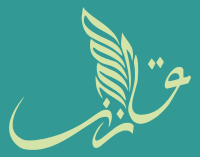Tatar language
The Tatar language is spoken in Russia by about 5.3 million people, and also by communities in Azerbaijan, China, Finland, Georgia, Israel, Kazakhstan, Latvia, Lithuania, Romania, Turkey, Ukraine, the US, Uzbekistan, and several other countries.The Republic of Tatarstan passed a law in 1999, which came into force in 2001, establishing an official Tatar Latin alphabet.A Russian federal law overrode it in 2002, making Cyrillic the sole official script in Tatarstan since.Tatar is also considered to have been the official language in the short-lived Idel-Ural State, briefly formed during the Russian Civil War.The Central or Middle dialectal group is spoken in Kazan and most of Tatarstan and is the basis of the standard literary Tatar language.[13] Mishar Dialect, and especially its regional variant in Sergachsky district (Nizhny Novgorod), is said to be "faithfully close" to the ancient Kipchak language.[16] Two main isoglosses that characterize Siberian Tatar are ç as [ts] and c as [j], corresponding to standard [ɕ] and [ʑ].A brief linguistic analysis shows that many of these dialects exhibit features which are quite different from the Volga–Ural Tatar varieties, and should be classified as Turkic varieties belonging to several sub-groups of the Turkic languages, distinct from Kipchak languages to which Volga–Ural Tatar belongs.[23] Poppe (1963) proposed a similar yet slightly different scheme with a third, higher mid, height, and with nine vowels.[23] According to Makhmutova (1969) Tatar has three vowel heights: high, mid and low, and four tongue positions: front, front-central, back-central and back (as they are named when cited).The tenth vowel ï is realized as the diphthong ëy (IPA: [ɯɪ]), which only occurs word-finally, but it has been argued to be an independent phoneme.[23] The mid reduced vowels in an unstressed position are frequently elided, as in кеше keşe [kĕˈʃĕ] > [kʃĕ] 'person', or кышы qışı [qɤ̆ˈʃɤ̆] > [qʃɤ̆] '(his) winter'.[24] In Russian loans there are also [ɨ], [ɛ], [ɔ], and [ä], written the same as the native vowels: ы, е/э, о, а respectively.The distribution of indefinite future tense is more complicated in consonant-ending stems, it is resolved by -арга/-ырга infinitives (язарга – язар).Dozens of them have irregular stems with a final mid vowel, but obscured on the infinitive (уку – укы, укый, төзү – төзе, төзи).During the 19th century, Russian Christian missionary Nikolay Ilminsky devised the first Cyrillic alphabet for Tatar.The Republic of Tatarstan passed a law in 1999 that came into force in 2001 establishing an official Tatar Latin alphabet.A Russian federal law overrode it in 2002, making Cyrillic the sole official script in Tatarstan since.This can be seen most clearly in words but also in specific sounds; Tatar ğ / г is basically the Arabic ghayn غ.A common complaint among those curious about the Tatar language outside of Russia has been its lack of non-Russian Latin alphabet sources.





Tatar language (disambiguation)ISO 639 codeVolga regionVolga TatarsQarataysLanguage familyTurkicCommon TurkicKipchakVolga TürkiMishar TatarNagaibakSiberian TatarWriting systemTatar alphabetCyrillicArabicTatarstanRussiaPolandRegulated byISO 639-1ISO 639-2ISO 639-3GlottologLinguasphereUNESCOAtlas of the World's Languages in DangerUnicodeBulgarsTurkic languageEuropean RussiaSiberiaCrimean TatarKipchak languagesAzerbaijanFinlandGeorgiaIsraelKazakhstanLatviaLithuaniaRomaniaTurkeyUkraineUzbekistanFinnicMordvaQaratay2010 censusRussiansBashkortostanBashkirsZilantKazan MetroRepublic of Tatarstanofficial scriptCyrillic scriptTatar Autonomous Soviet Socialist RepublicIdel-Ural StateRussian Civil Warhumanitiesdistricts of TatarstanGabdulkhay AkhatovNagaibak dialectMishar Tatar dialectaffricatesSergachsky districtRadlovSamoylovichTatar minority of FinlandSiberian Tatar languageChulym languageBaskakovraisedBashkirLabialDentalPost-alveolarPalatalUvularGlottalNasalsPlosivesVoicelessVoicedFricativesApproximantspalatalizationallophonyallophonesphonemesSonorantphonotacticsassimilatedassimilationsyncopatedreducedelidedconsonant clustersphonesvowel harmonyepenthetic vowelFinal devoicingagglutinative languageNominativeAccusativeGenitiveDativeLocativeAblativeTurkishJaꞑalifmadrasahNizhny NovgorodCyrillic scriptsİske imlâYaña imlâNikolay IlminskyKryashensSoviet UnionLatin alphabetConstitutional CourtRussian constitutionPerso-Arabic alphabetCommon Turkic Alphabet

